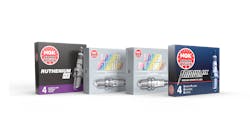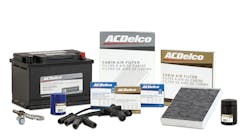WHAT IT IS: Technician productivity refers to the time a technician is available to work measured against the actual time spent working on positive cash flow repair orders. Tracking productivity shows you the actual time your technicians work in a day and allows you to see whether the shop has enough work for them and whether that repair order is actually ready for work when they are available.
HOW TO CALCULATE IT: Hours worked ÷ hours available
INDUSTRY AVERAGE: 80-89%
OPTIMAL BENCHMARK: 90%+. Of the shops surveyed, only 41 percent with an average of $1 million and more in annual revenue reported productivity rates above 90 percent.
HOW TO IMPROVE IT: Low productivity is not a problem that gets better with time or by ignoring it once it raises its ugly head. It needs to be dealt with now. And it starts with asking the right questions.
- ARE MY TECHS BUSY ENOUGH? Low car count is one of the most severe factors contributing to low productivity. You need to know what the average week looks like in your shop in order to assess common tech productivity. Low car count can actually be curbed fairly quickly by increasing efforts in marketing or by making the more difficult decisions in changing staff levels. Low productivity, however, has less to do with technicians and more to do with ownership. Good techs deserve steady work; are you providing it to them?
- IS MY DISPATCH PROCESS EFFICIENT? Look at your counter—are tickets waiting to be serviced? That’s work that needs attention. Many shops implement call times directly on the ticket indicating when the service advisor will call the client for recommended repairs. Job boards specific to each technician will let everyone know the expected work for the day and what’s in the queue. Create a system that works for you—simply color-coding repair orders as waiting to be serviced, being serviced, or finished will work wonders for understanding what’s happening around the shop.
- IS MY PARTS PROCESS ADEQUATE? Shops need parts just as people need food; if you can’t get it, you’re not happy. When parts are delivered, are they on time and of high quality? Are they even the right part? While many shops keep a steady cache of filters, wipers and other simple, seasonal needs, larger repairs require more complicated components. Keep a checklist or requisition form for standard repairs of above-average complication and precision.
- Electronic parts ordering is another surefire way to get what you need when you need it. Integrating a checklist to work seamlessly with digital parts software and sourcing ensures getting the right part, every time.



